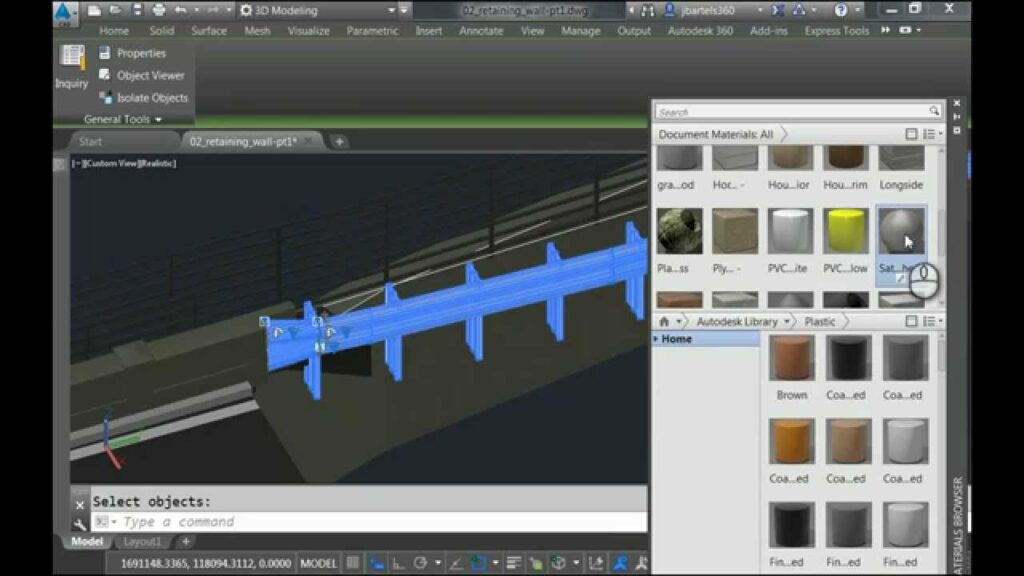Unleashing Creativity: A Comprehensive Guide to Creating Custom Components and Objects in InfraWorks

Introduction: Autodesk InfraWorks is a versatile and powerful software platform designed for infrastructure planning, design, and visualization. While it offers a vast library of pre-built components and objects for infrastructure projects, users often encounter scenarios where custom components or objects are needed to meet specific project requirements. Whether it’s creating unique buildings, custom road signs, or specialized infrastructure elements, the ability to create custom components and objects in InfraWorks unlocks endless possibilities for creativity and innovation. This comprehensive guide aims to provide a detailed overview of how to create custom components and objects in InfraWorks, offering step-by-step insights and expert tips to empower users to unleash their creativity and customize their projects to perfection.
Understanding Custom Components and Objects in InfraWorks: Custom components and objects in InfraWorks refer to user-defined elements that are created or modified to suit specific project needs or design preferences. These can range from simple 3D models of buildings and structures to complex infrastructure assets such as bridges, tunnels, and utilities. By creating custom components and objects, users can enhance the visual quality, accuracy, and functionality of their InfraWorks models, allowing for greater customization and flexibility in project design and visualization.
Key Features of Custom Components and Objects in InfraWorks: InfraWorks provides a range of features and tools for creating custom components and objects, including:
- 3D Modeling Tools: InfraWorks offers intuitive 3D modeling tools that enable users to create and modify custom components and objects directly within the software.
- Import and Export Capabilities: Users can import existing 3D models from external software applications, such as Autodesk Revit or SketchUp, and export custom components and objects for use in other projects or software platforms.
- Material and Texture Libraries: InfraWorks includes libraries of materials and textures that users can apply to custom components and objects to enhance their visual appearance and realism.
- Parametric Modeling: Advanced users can leverage parametric modeling techniques to create dynamic, customizable components and objects that can adapt to changes in project parameters or design criteria.
Creating Custom Components and Objects in InfraWorks: The process of creating custom components and objects in InfraWorks involves several key steps, from defining project requirements to modeling, texturing, and integrating custom elements into the InfraWorks environment. Here’s a comprehensive guide to creating custom components and objects in InfraWorks:
- Define Project Requirements:
- Start by defining the requirements and specifications for the custom component or object, including its size, shape, dimensions, materials, and functionality.
- Consider factors such as project constraints, design standards, and user preferences when defining project requirements to ensure that the custom component or object meets the project needs.
- Model the Custom Component:
- Use InfraWorks’ 3D modeling tools to create the custom component or object, starting with basic geometric shapes and gradually refining the model to achieve the desired form and detail.
- Apply modeling techniques such as extrusion, lofting, and Boolean operations to create complex shapes and structures, as needed for the custom component or object.
- Texture and Material Mapping:
- Apply textures and materials to the custom component or object to enhance its visual appearance and realism.
- Use InfraWorks’ material and texture libraries to select appropriate materials, such as concrete, steel, glass, or vegetation, and apply them to different parts of the custom component or object.
- Fine-Tune and Optimize:
- Fine-tune the custom component or object by adjusting its geometry, proportions, and detailing to achieve the desired level of realism and accuracy.
- Optimize the custom component or object for performance and efficiency by reducing polygon count, optimizing texture resolution, and simplifying geometry where possible.
- Integrate into InfraWorks:
- Import the custom component or object into the InfraWorks model using the import functionality, ensuring that it is properly positioned and aligned within the project environment.
- Test the custom component or object in different views and perspectives to verify its appearance, scale, and compatibility with other elements in the InfraWorks model.
Best Practices for Creating Custom Components and Objects in InfraWorks: In addition to following the step-by-step guidelines outlined above, here are some best practices to optimize the process of creating custom components and objects in InfraWorks:
- Plan and Prototype: Start by planning and prototyping the custom component or object to visualize its form, function, and feasibility before proceeding with detailed modeling and texturing.
- Use Reference Images: Gather reference images, drawings, or specifications to guide the modeling and texturing process, ensuring accuracy and realism in the final custom component or object.
- Organize and Document: Maintain organized file structures and documentation for the custom components and objects, including metadata, naming conventions, and version control, to facilitate reuse and collaboration.
- Test and Iterate: Test the custom components and objects in different scenarios and conditions to identify any issues or limitations, and iterate on the design as needed to improve performance and usability.
- Share and Collaborate: Share the custom components and objects with other project stakeholders, collaborators, and the InfraWorks community to foster collaboration, feedback, and knowledge sharing.
Conclusion: Creating custom components and objects in InfraWorks opens up endless possibilities for creativity, innovation, and customization in infrastructure projects. By following the comprehensive guide and best practices outlined above, users can unleash their creativity, customize their projects to perfection, and elevate the quality and realism of their InfraWorks models. With its intuitive interface, powerful modeling tools, and extensive libraries of materials and textures, InfraWorks empowers users to create dynamic, immersive, and visually stunning environments that bring their design visions to life. Whether it’s designing unique buildings, custom infrastructure elements, or specialized urban landscapes, the ability to create custom components and objects in InfraWorks enables users to push the boundaries of imagination and create infrastructure projects that inspire, engage, and endure.




